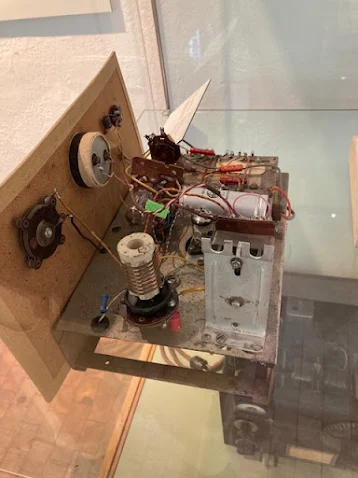I had completely forgotten that my blog had at least two posts on Agent Sonya way back in 2009. I know there is a lot of interest in her alleged radio derring-do.
Here are the two blog posts from 2009:
https://soldersmoke.blogspot.com/2009/08/sonya-had-knack.html
https://soldersmoke.blogspot.com/2009/09/sonyas-rig.html
And here is my 2025 post on Sonya:
https://soldersmoke.blogspot.com/2025/04/agent-sonya-did-soviet-spies-really.html
One friend recently mentioned that we have not seen any museum evidence of these kinds of homebrew spy rigs. If this really was a widespread practice, you would expect to find at least ONE of these rigs in a museum somewhere. Has anyone seen this kind of thing?
Here is something more recent about Sonya from the National WWII Museum in New Orleans:
https://www.youtube.com/watch?v=NU9-APiIUaQ
The Macintyre interview is really interesting. A friend told me that he is a very serious writer on the topic of espionage, whose assertions have to be taken seriously. For our purproses, here are some highllights:
22:18 Sonya goes through Soviet Spy School and is trained on how to build radios.
24:50 In China under Japanese occupation, had bamboo poles supporting antenna over her house!
25:40 Transferred to Switzerland, "built another radio."
34:18 Transferred to UK, built a "powerful radio transmitter in her loo."
51:41 Macintyre refers to Sonya as "the only Soviet radio operator in Switzerland."
So, I still don't know about the claim that Sonya was homebrewing radios. It does appear that Sonya was building them. But it also seems like she was more of a radio operator than she was a spy... Perhaps the Soviets didn't see the same distinction that we do. Still, it would be nice to find in a museum somewhere at least one example of Sonya-style homebrew radio.
Macintyre says that "all biography is burglary." What would autobiography be?


























